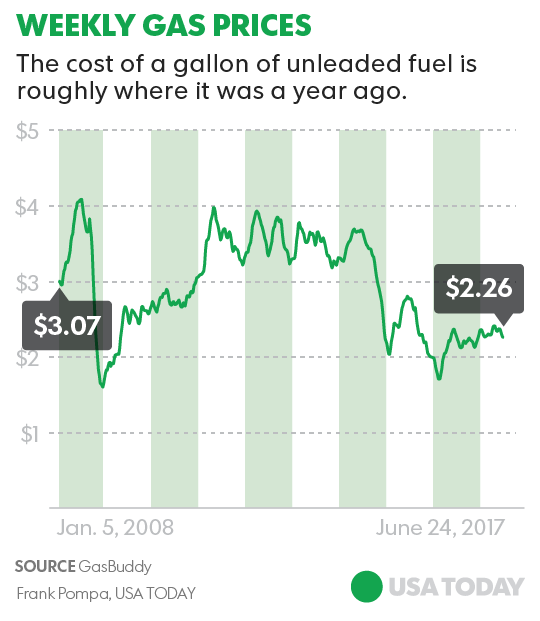Gauer stated that the
fund was aimed at encouraging French investors to invest in the Nigeria
Oil and Gas sector, especially in the light of the fact that Nigeria
remains her first economic trading partner in Africa.
He also stated that in spite of the concerns expressed by some French
companies who were having challenges with the unclear Nigeria’s fiscal
policies in the Oil and Gas sector, some other French investors were
currently developing wind energy and solar energy in Katsina State.
The French Ambassador commended the Federal Government for stemming the
Niger Delta insecurity situation, noting that Total, a French
multinational oil and gas company, had significant investment equity in
the Nigeria Liquefied Natural Gas Limited (NLNG) and Egina project.
He added that the French government is also cooperating with the Federal
Government in the fight against Boko Haram insurgency.
In his own remarks, Ughamadu, said the NNPC, under the current
management led by the Group Managing Director, Mr. Maikanti Baru, was
well positioned and open to investment opportunities from the French
Government and investors.
He noted that with the significant scale down in pipeline vandalism and
insecurity which has boosted oil production, global investors such as
the French Government can now invest in renewable energy, gas and power
infrastructural development, pipeline construction, storage facility and
the direct sales and direct purchase of Nigeria crude oil grades.
He said the NNPC as the state owned oil and gas Corporation had global
operations and called for closer collaboration between the French
Government and the Corporation especially in the area of consular
services in order to enable NNPC top executives and staff meet their
global engagements.
He thanked the Ambassador for the warm reception accorded the NNPC
delegation and assured him that with the leadership of the new NNPC
management, the corporation was determined to develop a robust business
atmosphere for investors.
Read more at: http://www.vanguardngr.com/2017/06/france-plans-one-billion-euros-investment-nigerias-oil-industry/
Gauer stated that the
fund was aimed at encouraging French investors to invest in the Nigeria
Oil and Gas sector, especially in the light of the fact that Nigeria
remains her first economic trading partner in Africa.
He also stated that in spite of the concerns expressed by some French
companies who were having challenges with the unclear Nigeria’s fiscal
policies in the Oil and Gas sector, some other French investors were
currently developing wind energy and solar energy in Katsina State.
The French Ambassador commended the Federal Government for stemming the
Niger Delta insecurity situation, noting that Total, a French
multinational oil and gas company, had significant investment equity in
the Nigeria Liquefied Natural Gas Limited (NLNG) and Egina project.
He added that the French government is also cooperating with the Federal
Government in the fight against Boko Haram insurgency.
In his own remarks, Ughamadu, said the NNPC, under the current
management led by the Group Managing Director, Mr. Maikanti Baru, was
well positioned and open to investment opportunities from the French
Government and investors.
He noted that with the significant scale down in pipeline vandalism and
insecurity which has boosted oil production, global investors such as
the French Government can now invest in renewable energy, gas and power
infrastructural development, pipeline construction, storage facility and
the direct sales and direct purchase of Nigeria crude oil grades.
He said the NNPC as the state owned oil and gas Corporation had global
operations and called for closer collaboration between the French
Government and the Corporation especially in the area of consular
services in order to enable NNPC top executives and staff meet their
global engagements.
He thanked the Ambassador for the warm reception accorded the NNPC
delegation and assured him that with the leadership of the new NNPC
management, the corporation was determined to develop a robust business
atmosphere for investors.
Read more at: http://www.vanguardngr.com/2017/06/france-plans-one-billion-euros-investment-nigerias-oil-industry/
Gauer stated that the
fund was aimed at encouraging French investors to invest in the Nigeria
Oil and Gas sector, especially in the light of the fact that Nigeria
remains her first economic trading partner in Africa.
He also stated that in spite of the concerns expressed by some French
companies who were having challenges with the unclear Nigeria’s fiscal
policies in the Oil and Gas sector, some other French investors were
currently developing wind energy and solar energy in Katsina State.
The French Ambassador commended the Federal Government for stemming the
Niger Delta insecurity situation, noting that Total, a French
multinational oil and gas company, had significant investment equity in
the Nigeria Liquefied Natural Gas Limited (NLNG) and Egina project.
He added that the French government is also cooperating with the Federal
Government in the fight against Boko Haram insurgency.
In his own remarks, Ughamadu, said the NNPC, under the current
management led by the Group Managing Director, Mr. Maikanti Baru, was
well positioned and open to investment opportunities from the French
Government and investors.
He noted that with the significant scale down in pipeline vandalism and
insecurity which has boosted oil production, global investors such as
the French Government can now invest in renewable energy, gas and power
infrastructural development, pipeline construction, storage facility and
the direct sales and direct purchase of Nigeria crude oil grades.
He said the NNPC as the state owned oil and gas Corporation had global
operations and called for closer collaboration between the French
Government and the Corporation especially in the area of consular
services in order to enable NNPC top executives and staff meet their
global engagements.
He thanked the Ambassador for the warm reception accorded the NNPC
delegation and assured him that with the leadership of the new NNPC
management, the corporation was determined to develop a robust business
atmosphere for investors.
Read more at: http://www.vanguardngr.com/2017/06/france-plans-one-billion-euros-investment-nigerias-oil-industry

Lagos State Governor,
Mr. Akinwunmi Ambode (right) presenting an eyo plaque to the Ambassador
of France to Nigeria, Mr. Denys Gauer (left) during his courtesy visit
to the Governor at the Lagos House, Ikeja, on Wednesday, July 15, 2015.
Read more at: http://www.vanguardngr.com/2017/06/france-plans-one-billion-euros-investment-nigerias-oil-industry/
Lagos State Governor,
Mr. Akinwunmi Ambode (right) presenting an eyo plaque to the Ambassador
of France to Nigeria, Mr. Denys Gauer (left) during his courtesy visit
to the Governor at the Lagos House, Ikeja, on Wednesday, July 15, 2015.
Read more at: http://www.vanguardngr.com/2017/06/france-plans-one-billion-euros-investment-nigerias-oil-indust
http://www.vanguardngr.com/2017/06/france-plans-one-billion-euros-investment-nigerias-oil-industry/
The Nigerian National Petroleum Corporation, yesterday, stated that France, through the French Development Agency, has set aside one billion euros to be invested in the Nigerian Oil and Gas industry.
According to a statement by the NNPC, France Ambassador to Nigeria, His Excellency, Denys Gauer, made this known when the Group General Manager, Group Public Affairs Division of the NNPC, Mr. Ndu Ughamadu, led a delegation to his office in Abuja.
The Nigerian National
Petroleum Corporation, yesterday, stated that France, through the French
Development Agency, has set aside one billion euros to be invested in
the Nigerian Oil and Gas industry.
According to a statement by the NNPC, France Ambassador to Nigeria, His
Excellency, Denys Gauer, made this known when the Group General Manager,
Group Public Affairs Division of the NNPC, Mr. Ndu Ughamadu, led a
delegation to his office in Abuja.
Read more at: http://www.vanguardngr.com/2017/06/france-plans-one-billion-euros-investment-nigerias-oil-industry/
Gauer stated that the fund was aimed at encouraging French investors to invest in the Nigeria Oil and Gas sector, especially in the light of the fact that Nigeria remains her first economic trading partner in Africa.
He also stated that in spite of the concerns expressed by some French companies who were having challenges with the unclear Nigeria’s fiscal policies in the Oil and Gas sector, some other French investors were currently developing wind energy and solar energy in Katsina State.
The French Ambassador commended the Federal Government for stemming the Niger Delta insecurity situation, noting that Total, a French multinational oil and gas company, had significant investment equity in the Nigeria Liquefied Natural Gas Limited (NLNG) and Egina project.
He added that the French government is also cooperating with the Federal Government in the fight against Boko Haram insurgency.
In his own remarks, Ughamadu, said the NNPC, under the current management led by the Group Managing Director, Mr. Maikanti Baru, was well positioned and open to investment opportunities from the French Government and investors.
He noted that with the significant scale down in pipeline vandalism and insecurity which has boosted oil production, global investors such as the French Government can now invest in renewable energy, gas and power infrastructural development, pipeline construction, storage facility and the direct sales and direct purchase of Nigeria crude oil grades.
He said the NNPC as the state owned oil and gas Corporation had global operations and called for closer collaboration between the French Government and the Corporation especially in the area of consular services in order to enable NNPC top executives and staff meet their global engagements.
He thanked the Ambassador for the warm reception accorded the NNPC delegation and assured him that with the leadership of the new NNPC management, the corporation was determined to develop a robust business atmosphere for investors.






